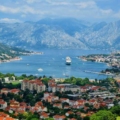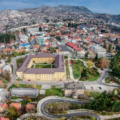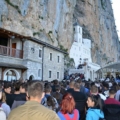Montenegro’s national parks, especially Lovcen and Durmitor, are marvels you shouldn’t miss. These untouched natural reserves have been the crown jewels that attract tourists from all over the world. They hide some incredible landscapes, including vibrant valleys, steep mountain peaks, and cold rivers and lakes worthy of your attention.
During short visits to Montenegro, it is often difficult to decide which of these two you should visit. They both offer something unique. And because of such a rich and versatile offer, our new blog is dedicated to precisely answering your question: Should you visit Lovcen or Durmitor National Park?
Therefore, keep reading to discover what our suggestions are and which National park should be your priority when travelling through Montenegro.
National Park Lovcen
Lovcen, a mountain located in the south of Montenegro, gained its status as a national park in 1952. This incredible natural area has been worshipped for centuries due to its natural marvels and architectural masterpieces scattered around its valleys.

Nature
Lovcen is often referred to among locals as the “Black Mountain”. This is why the country bears the name Montenegro (Latin translation for black mountain). The national park itself covers 6,220 hectares, and it includes the central and highest part of the Lovcen massif.
Besides Lovcenski vrh and Stirovnik peaks, the surrounding area is full of natural elements. The mountain’s slopes are rocky, with multiple cracks, pits and deep sinkholes, giving the landscape a specific look.
Flora
In this national park, the continental and Mediterranean climates meet. This allowed a very versatile flora to develop. When it comes to the forests, about 70% of them include beech and oak trees. The forests have also been reforested with species such as hornbeam, ash, pine, silver linden, beech, spruce, etc.
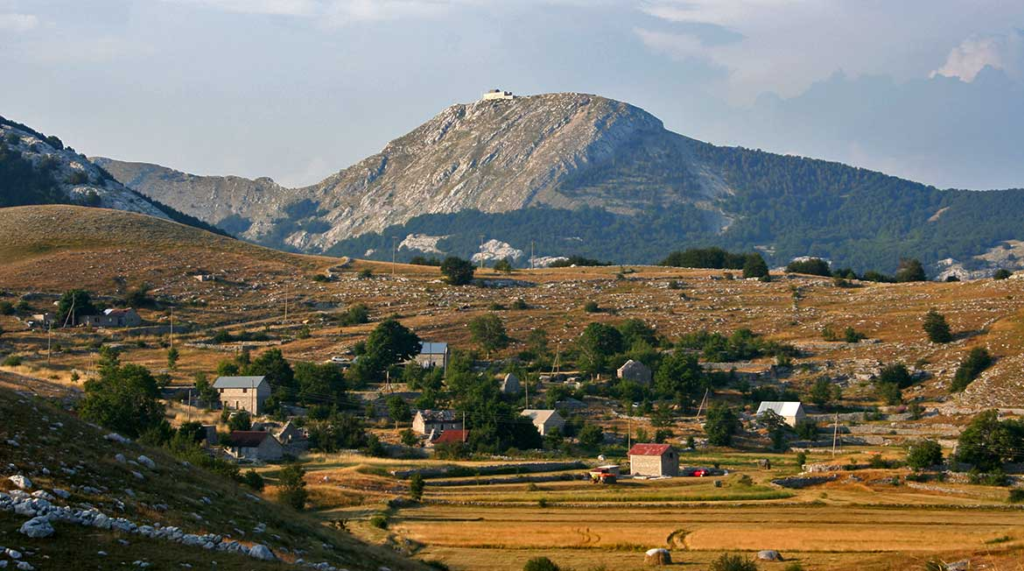
One of the most interesting facts about Lovcen National Park is that one-third of the plant species in Montenegro and the Balkans live on the Lovcen massif. There are almost 1,300 species of plants, many of which are rare, endemic, medicinal and aromatic plants. A small portion of it, around 200, are just registered species of mushrooms.
Fauna
In addition to versatile flora, there is equally diverse fauna, as Lovcen is home to numerous species of mammals. These include wolves, foxes, rabbits, deer, bears, and boars. White-breasted hedgehogs, moles, squirrels, karst mice, and bats are typical animals on these mountain slopes.
On top of this, over 200 species of birds visit Lovćen National Park during migration or nesting, such as robins, woodpeckers, jays, and grasshoppers. They are visible throughout the year, which is why Lovcen is a very popular destination for ornithologists.

Other attractions
National Park Lovcen, besides its immense natural significance, is also known for its historical and architectural marvels.
Mausoleum of Njegos
One of the most distinguished places to visit in Lovcen is the Mausoleum of Petar II Petrovic Njegos. This is the burial place of a distinguished historical figure, ruler, and poet. Njegos is the author of the most famous epic, “Mountain Wreath,” which became the most-read book among the South Slavs.

His tomb lies on Lovcen’s highest peaks, from which a breathtaking view expands on Boka Bay and Katun Nahija. Sir Arthur Bernard Shaw aptly called this a “Stone Sea.” The Mausoleum is the masterpiece of artist Ivan Meštrović, who skillfully blended art and architecture. Up until today, it has been the world’s tallest mausoleum.
From this spot, you will meet Montenegro’s true character, as it combines the sea view and mountains.
King Nikola’s Birth Place
The national park Lovcen is also the birthplace of King Nikola I Petrović. He was the last ruler of Montenegro’s famous Petrovic dynasty. His birthplace is in the village of Njegusi, a picturesque location within the national park.

Today, the house of Montenegrin King Nikola is still preserved in the village, making it a trendy place for visitors. This historic place’s beauty is authentic and unique, thanks to the fairy-tale meadow areas and the wonderful garden.
National Park Durmitor
National Park Durmitor is a rare and authentic landscape with untouched nature that still maintains its wilderness today. Located northwest of Montenegro, this area on the Durmitor mountain was declared a national park in 1952.
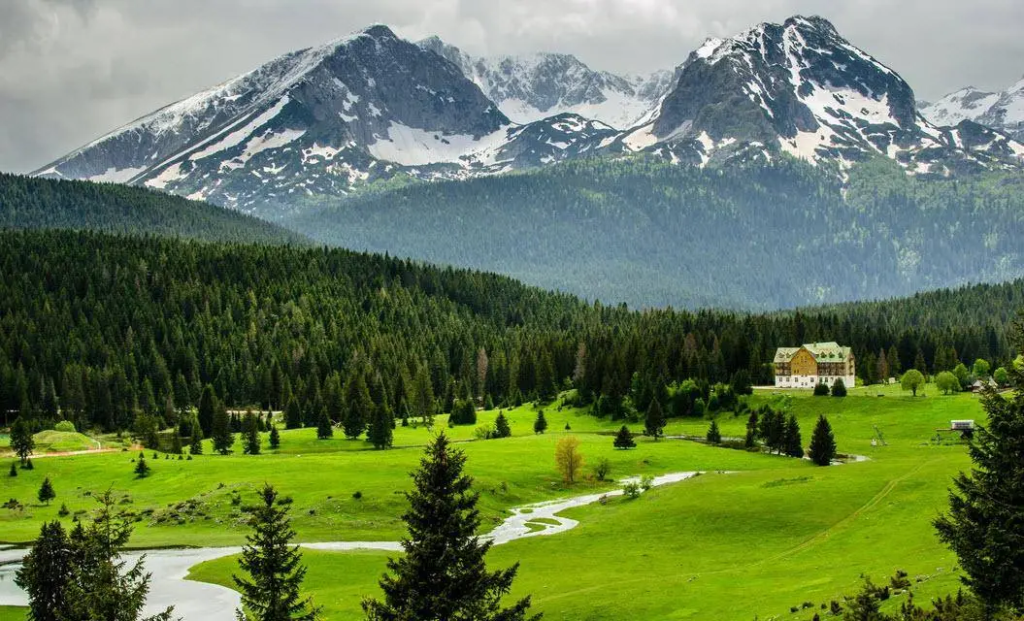
It covers an area of 39,000 ha and includes the central massif of Durmitor, the Tara, Draga, and Sušica canyons, and the upper part of the Komarnica canyon valley. Due to its marvellous appearance, Durmitor National Park was on the list of World Cultural and Natural Heritage sites in 1980, while Tara and its canyon were included in the world’s ecological reserves of the biosphere in 1977 by UNESCO’s Man and the Biosphere program.
Nature
Durmitor is the highest mountain in Montenegro, with over 48 peaks higher than 2000 meters, among which the tallest one is Bobotiv kuk, 2,523 meters. Besides astonishing and rugged peaks, the Durmitor jewels also include 18 glacial lakes, more than 200 pits, and caves with stalactites and stalagmites dominating the space.
Read Also: Best Hiking trails in Montenegro
Besides these, Durmitor is mostly known for the incredible winding canyon of the Tara River. On the map, NP Durmitor now looks like an axe, and the long canyon of Tara is its handle. This adds a special charm to this incredible natural area.
Flora
Durmitor is very rich with incredible plant life, with almost 1,600 species growing here. Flora diversity is experienced across many areas, from green forests to the valleys next to the lakes.

The mountain is also well known for its numerous protected endemic species. The most recognisable is the black pine, whose individual trees can reach over 50 meters in height and are often hundreds of years old.
What is interesting about Durmitor, and not found on other mountains, is that in several places above the coniferous, beech, and deciduous forests have grown. This is very unusual, considering that deciduous forests mostly grow in lower areas and under conifers.
Fauna
Durmitor National Park is equally known as a home to diverse animal life. Here, you will encounter forest and mountain species such as the brown bear, gray wolf, fox, European wild cat, and wild boar. In addition to these, you might encounter badgers, squirrels, rabbits, several species of frogs, and many more. Durmitor is also the natural habitat of otters, which live in the Tara River and is a rarity in Europe.

A fun fact about Durmitor is that its forest ant species is protected by law. They are very visible throughout the year, unlike butterflies and beetles, which are equally unique and typically noticeable in summer. There are 130 types of diurnal butterflies in this area, and among them is the Apollo, which is the most frequent target of collectors. The water world is also versatile, with the presence of trout, brook trout, grayling, bream, and lake goldfish.
Finally, almost 168 species of birds live in the Durmitor area, including rarities such as the grouse, golden eagle, partridge, falcon, and crossbill.
Attractions
The ultimate attraction of the Durmitor is its three peaks. The Bobot’s hip is 2,523 meters, Bezimeni vrh is 2,487 meters and Đevojka is 2,440 meters. These massive are all crowded together and form the highest rocky ridge of this mountain known among locals as “Soa Nebeska”. That name could be interpreted as “supporter of heaven” as it matches the masterful beauty of the location.

Durmitor’s jewels also include numerous lakes, which contribute to its exceptional beauty. The ancient process of glaciers chiselling away allowed nature to create eighteen of Durmitor’s “emerald” and blue-blue “mountain eyes” lakes you must explore.
Crno jezero is Durmitor’s largest lake and unquestionably the most well-known. It’s the most famous lake with an astonishing depth of 49 metres. It is also known as mountain eyes due to its appearance. It is surrounded by lush forest, which makes it an ideal spot to visit.
Read Also: Best Hiking Tours in Montenegro
Besides this one, Durmitor is home to the Devil’s Lake or Vrazije jezero. One of the most exciting legends in the north of Montenegro is tied to this lake. It is a tale of a red-winged horse with fire coming out of its nostrils that visits the lake every night. He has impregnated the mares and then beat them so that they would not give birth to his foal. One mare ran away from him and gave birth to Jabučil, who was later sung in folk epic songs as the famous winged horse of Duke Momčil, a national hero.

Final verdict
Deciding between visiting Durmitor and Lovcen is incredibly difficult. Both national parks rightfully belong to the list of the best places to see in Montenegro.
Read Also: 6 Best Places to Stay Near Durmitor National Park
If you, however, need to make a decision and you want to combine architectural marvels with impeccable nature, Lovcen is a better choice. It is also a great, family-friendly location with numerous attractions. On the other hand, if you seek to fully immerse yourself in nature and hike to some of the best natural locations in the north, then look no further than Durmitor.
Our suggestion is, however, to dedicate a bit of your time during the travel to both of these incredible locations and enjoy the mesmerising beauty.





